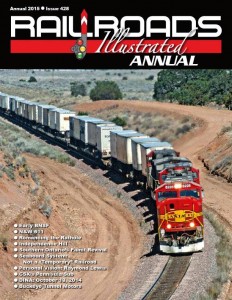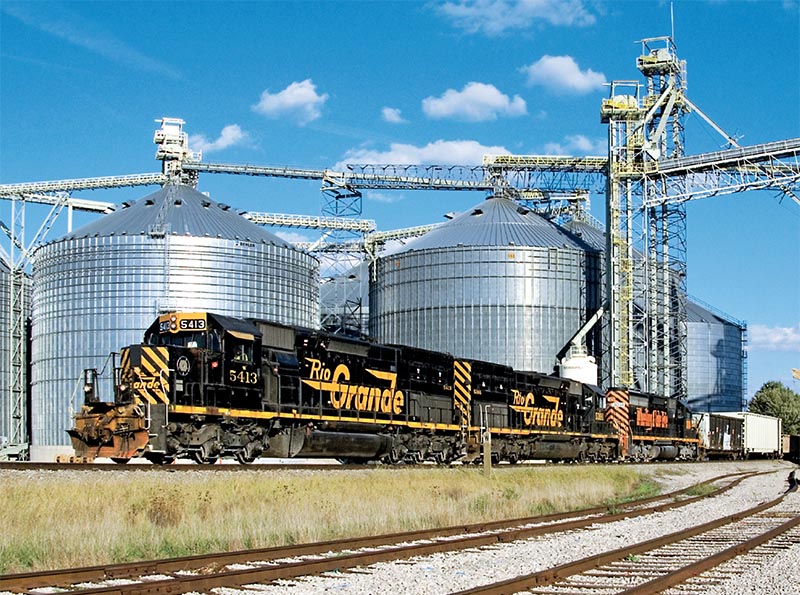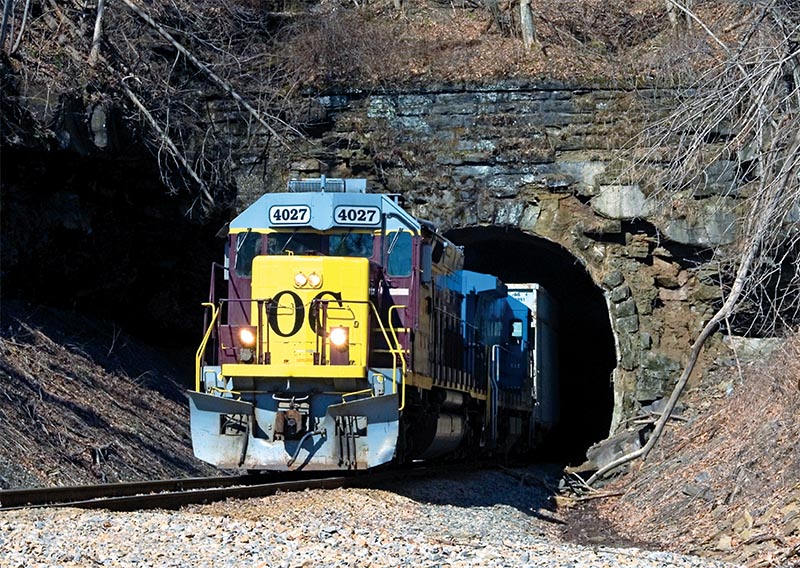 By John Leopard/photos by the author
By John Leopard/photos by the author
Many perceive Ohio’s topography as being flat, and roughly half the Buckeye State is exactly that — tabletop flat. Interstates 75 and 80 traverse the more vertically challenged portions of the state, making this belief even more popular. However, lush hills and valleys cover much of the southern and eastern parts of the state untouched by glacial activity. Most of eastern Ohio borders West Virginia — known as “the Mountain State.” When students of railroading speak of tunnels, Ohio is one of the last states brought up in that discussion. Surprisingly, there are currently 16 tunnels in Ohio with active rail lines and numerous others that have been “daylighted” or bypassed. The Buckeye State has even more tunnels with abandoned rights-of-way.

A long way from the Rockies, former Rio Grande tunnel motors lead Brewster to Toledo-bound freight through the grain handling complex at Clarksfield, Ohio, on October 8, 2014. John Leopard photo
Ironically, Ohio is also home to five short line/regional railroad companies that operate a locomotive of the type popularly known as “tunnel motors.” EMD modified the cooling systems of its popular SD45–2s and SD40-2s for better engine cooling in tunnels where hot exhaust fumes linger near the tunnel’s ceiling. EMD’s design engineers believed moving the radiator air intakes lower along the carbody’s walkway deck would allow more fresh, cooler air to enter. This was contrary to EMD’s standard radiator setup with fans on the roof of the locomotive’s long hood pulling air through radiators mounted at the top and side of the locomotive’s body. The two models have a very similar appearance. A diesel-spotting difference exists in the number of radiator fan access doors above the rear air intakes — the SD45T-2 has three compared with two on the SD40T-2…
The article appears in the 2015 Railroads Illustrated Annual.



